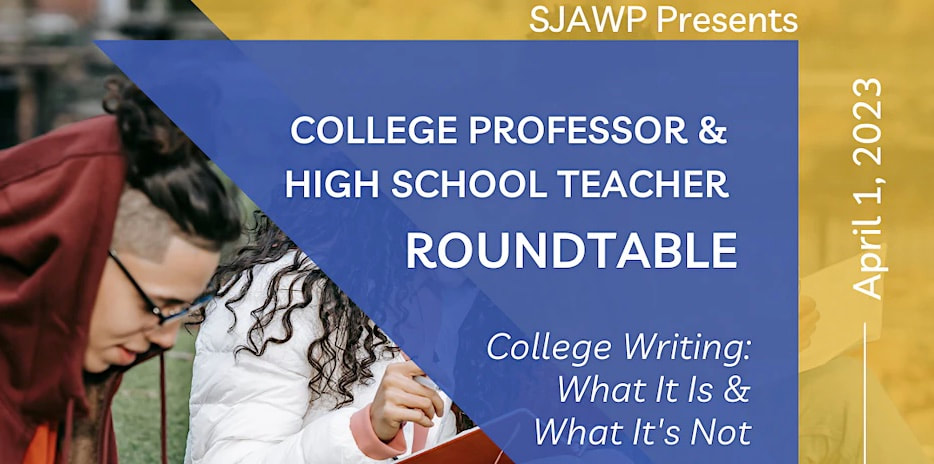|
On Saturday April 1st, I had the great pleasure of participating in a roundtable discussion on "College Writing: What It Is and What It's Not" hosted by the San Jose Area Writing Project as part of their Super Saturdays series of pedagogy-building workshops for high school teachers. The goal of this event was to bring high school teachers and college instructors together to dispel myths about college writing and break down what actual college writing looks like (i.e. what skills are emphasized, what types of writing are expected, what work is actually assigned). I co-facilitated this discussion with Hillary Walker, an adjunct professor of African American Studies and Ethnic Studies at the College of Alameda and the Director of the Bay Area Writing Project at the Berkeley School of Education. We opened the conversation by first providing an overview of how we design and teach our college writing classes. I greatly enjoyed hearing how our teaching priorities converge (for example, we both center critical race studies in our classrooms and design curricula that prioritize student agency and individual progress). It was also useful and informative to learn how our pedagogy differs given our different institutional contexts and resources. We then opened up the conversation to the high school teachers in attendance, offering the following questions to guide us:
In the rich conversation that ensued, participants discussed these questions and raised additional questions relevant to their specific concerns. At one point, the conversation focused on whether teaching the novel in the English high school classroom is still a relevant practice, or whether it has become outdated given that many college writing programs de-prioritize literary analysis. At another point, the discussion centered on exploring the role of scaffolding activities in helping students grow as writers over time. A major highlight of the conversation was when we began discussing the important question of how we writing instructors can stop perpetuating white language supremacy, such as by implementing innovative curricular design and alternative evaluation methods. Everyone in attendance expressed a commitment to meeting this objective by honoring their students' diverse home languages and unique forms of expression. However, several participants also acknowledged that they face several constraints in achieving this goal. For example, they might be compelled by district-wide requirements to assign texts from the Western literary canon when designing their curricula. Or they might feel pressured to teach writing skills that are rewarded on college-entrance and college-readiness standardized tests (like the SAT and AP Literature exam). Or they might have limited time as instructors to evaluate forms of writing that deviate from non-traditional Western forms. It was highly encouraging to brainstorm strategies for overcoming these challenges so as to affirm the various language uses and habits of our diverse student bodies.
Overall, I am grateful to have had the opportunity to be in community with fellow writing educators and learn about the rewards and challenges that come with working in educational settings that differ from my own. It was inspiring to know that despite our differences, we all share a passion for helping students develop their unique voices.
0 Comments
Your comment will be posted after it is approved.
Leave a Reply. |
AboutCheck out this page for periodic updates about my research, teaching, and community work. |
